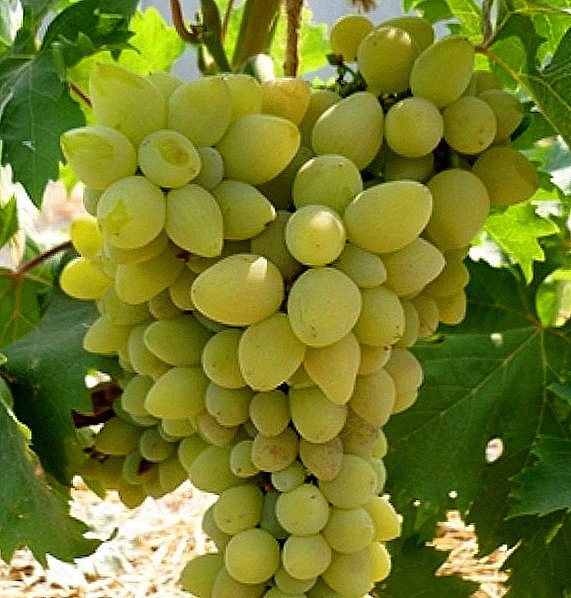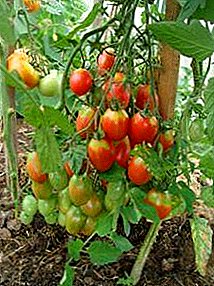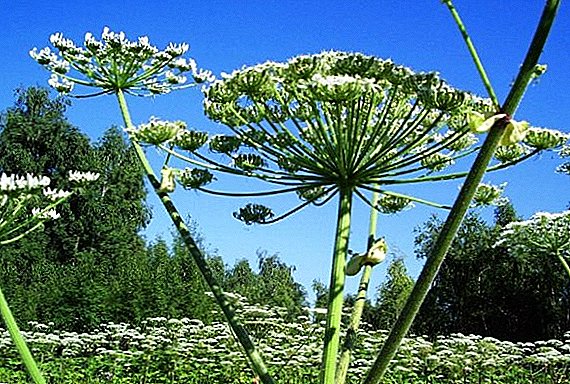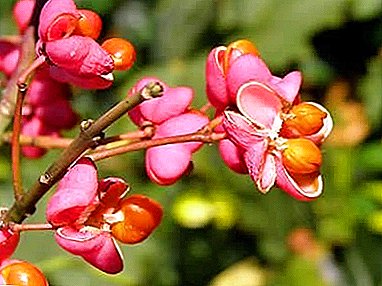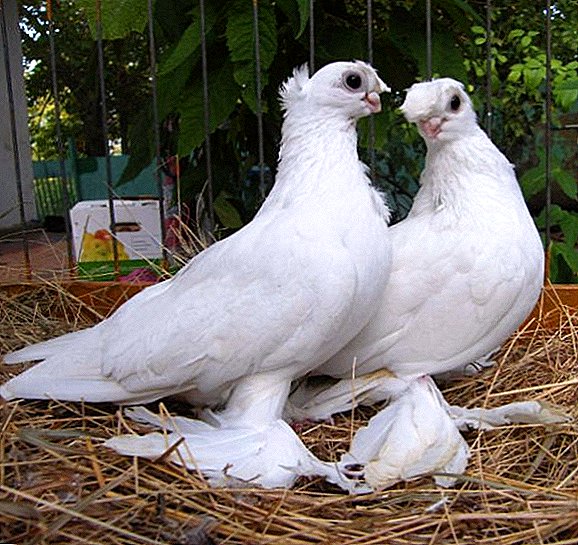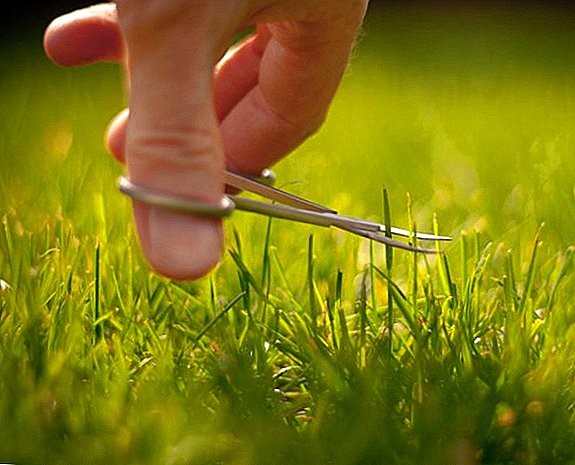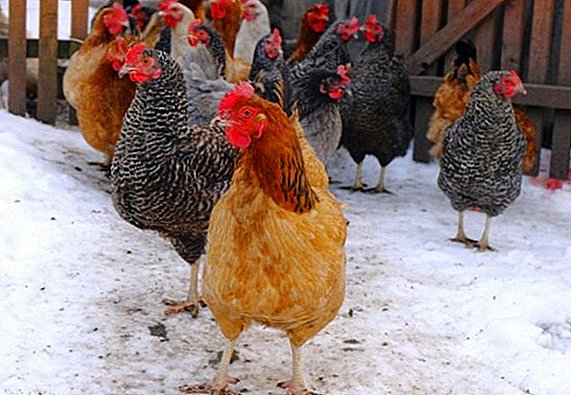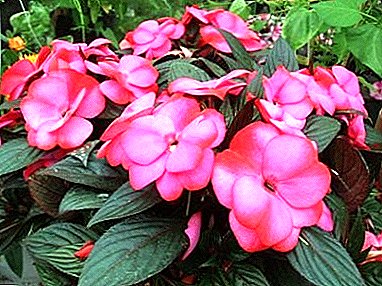
New Guinea Balsam - a type of herbaceous plant of the Balsamine family, which is becoming increasingly popular with flower growers in both indoor and garden growing. Its other name is “touchy”, acquired due to the presence of the response of the ripening boxes to the touch to them.
New Guinea balsam is a hybrid plant, successfully bred in 1972 by crossing the baker balsam with other blooming balsam species.
Description
New Guinean balsam in height develops up to 30-50 centimeters.
Root system powerful, well branched.
Stem stronger and more thickened than other types of balsams.
Leaves lanceolate up to 5 centimeters wide, with short petioles, reaching up to 10 centimeters in length. The leaf plates have a serrate edge and prominent deep veins. The color of the leaves varies from light green to dark green with a burgundy shade.
Flowers pyatilepestkovye with a diameter of 5 centimeters, with elongated processes on the sides. They bloom alone or in small buds.
After pollination of flowers formed oblong seed boxeswhich, at the stage of maturity, burst at the touch of them and release their seeds.
Caring for Balzamin New Guinean

Balsamine, including the type of "New Guinea", quite unpretentious plants. However, in the event of adverse factors lose their decorative appearance. In this regard, their successful indoor cultivation requires compliance with certain conditions.
Landing and ground
There is a wide variety of balsam varieties of the type "New Guinea", which differ in appearance: shades of leaves and colors of flowers, stem height. Many of the varieties are suitable for indoor cultivation.
Compact small and medium varieties are intended for cultivation in pots, and large, high varieties are best grown in flower beds as garden flowers. However, in summer, smaller grades of "Impatiens" can be planted in open ground or carried out on the street. This causes a good response in the form of luxurious flowering.
Pot
Be sure to have drainage holes in the pot. For a young balsam suitable dishes with a diameter 10-12 centimeters.
Transfer
In connection with the rapid development of balsam loses its decorative after 2 or 3 years. Therefore, adult plants are not subject to transplantation, and update cuttings.
Young flowers need transplantation, and it can be done at any time of the year, as the balsam does not need a rest period.
Watering

Watering should be moderate, but do not forget that the flower readily absorbs moisture.
When watering, water should be avoided on the lower leaves and excess moisture, which can stagnate and lead to rotting of the roots and leaves.
Air humidity
Air humidity in the plant habitat should not exceed 60-70% and go below 40%. In winter, in conditions of increased dryness of the air, a double spraying during the day is recommended, since a lack of moisture causes the leaves to fall off. You can also use a method such as placing a pot on a tray with moist expanded clay.
Thermal mode
New Guinea balsams love a moderately warm atmosphere. within 17-24 degrees Celsius. Sudden temperature fluctuations are extremely undesirable, therefore, in the summertime, the indoor plant is provided with a street stay only with a steady warm mode, when the temperature in the night does not fall below daytime by more than 5 degrees.
Balsam does not tolerate drafts and even short-term hypothermia
Light mode
Balsam needs enough Intense lighting without direct sunlight. Good location - windows of east and west orientation.
Wintering

The winter season of the plant tolerates well, if suitable conditions are created for it:
- Moderate watering;
- Warm room temperature;
- Spraying with a lack of moisture;
- Additional lighting with artificial light.
Breeding methods
New Guinea Balsam successfully propagated by cuttings. In order to multiply it is used the upper part of the plant with several nodes. Stalk put in the water or rooted in the wet sand. Root scaling occurs over a period of 15-20 days. Then a young flower is planted in a pot with a diameter of 10-12 centimeters. The soil is used universal. Drainage is required.
Breeding from seeds is more complicated because of the risk of low seedling germination and low survival rate of weak shoots.
Cultivation from seeds of Novogvinichesky Balsam
Before starting the cultivation, it is recommended to make sure that the seeds purchased are fresh, as they are suitable for 6 months and will not germinate for longer periods. Stages of cultivation:
- Sowing of seeds is performed in a shallow container filled with peat-based substrate;
- Substrate moisturize;
- The seed container is placed in a warm, non-winding place and covered with a film to create the greenhouse effect;
- Seeds germinate after 5-8 days;
- After forming a pair of leaflets on the sprouts dive;
- Young plants are transplanted into pots 4-5 weeks after sowing seeds.
Pruning
Trimming balsam - undesirable procedure as it leads to the formation of cornified stumps that violate the whole decorative appearance. In order to lush branching shoots recommended pinching.
Bloom

In "impatiens" there is no pronounced periods of flowering and rest. It all depends on the state of the environment. He is able to bloom all year round with appropriate decent conditions of stay.
Summertime is characterized by abundant flowering., and when in the open garden, the New Guinea balsam simply "drowns" in beautiful flowers.
Fertilizer and dressing
For fertilizing the flower, complex fertilizers with a high content of potassium are used.
The plant is fed 2 times a month. When the period of intensive flowering begins, fertilizing is reduced to 1 time.
Growth rate
Balsam "New Guinea" growing fast enough. It is necessary to ensure that the plant develops not so much in height as in width. When pinching shoots balsam grows thickly and becomes decorative.
Lifespan
The duration of active growth and flowering lasts up to 3 years in room conditions, then the plant needs to be grafted and planted anew.
When grown in open ground balsam turns into an annual plant.
Smell
Balsam flowers have no peculiar smell.
Diseases and pests

Diseases flower may be due only wrong content:
- Low air humidity leads to falling of leaves;
- Exposure to direct sunlight causes yellowing of the leaves;
- Excess moisture in the soil causes root rot;
- Lack of top dressing deprives flowering or causes its scarcity.
For the prevention of such "domestic" diseases Care must be taken to care for the plant. Usually, the renewal of the proper maintenance results in the state of the flower to normal, except in cases where irreversible processes have occurred, for example, running root rot.
Impatient damage pests. Most often it is attacked by a spider mite, as well as a whitefly and aphid.
The leaves of the plant should be washed. warm water to reduce the risk of uninvited visitors. If the disease has already captured the plant, then you will have to use effective chemicals designed specifically to combat certain pests.
New Guinea hybrid balsam varieties stand out for more vivid external signs from their relatives: larger flowers and stems. Such differences increase the popularity of breeding these plants.
Florists are particularly pleased with the fact that this species is unpretentious in care and develops both in indoor conditions and in open garden beds.
A photo
Next you will see a photo of the New Guinea Balsamine:




Useful materials
- Below is a list of articles that may be of interest to you:
- Types of Balsam:
- Balsam Waller
- Balsam Camellia
- Balsam Terry
- Garden Balsam
- Care for Balsamine:
- Diseases and pests Balsam
- Balsam Reproduction
- Balsam Blossom
- Proper landing Balsam



